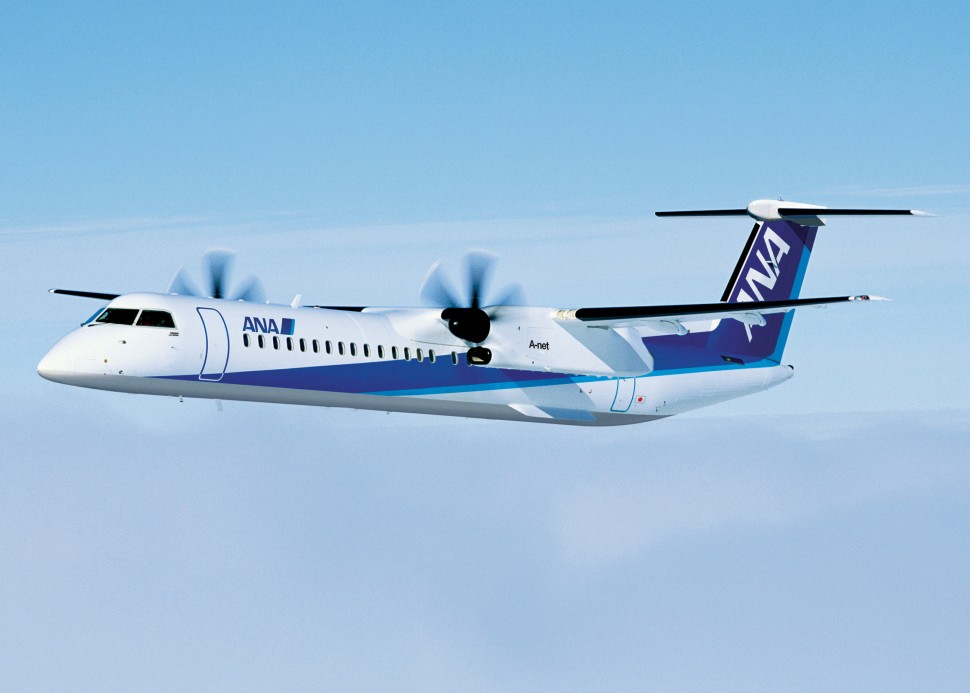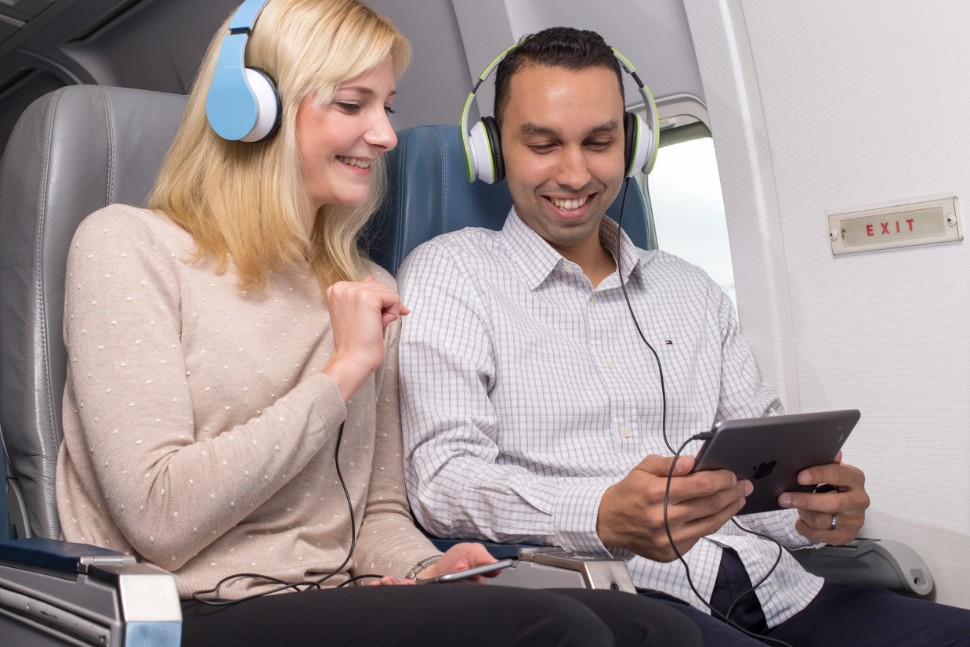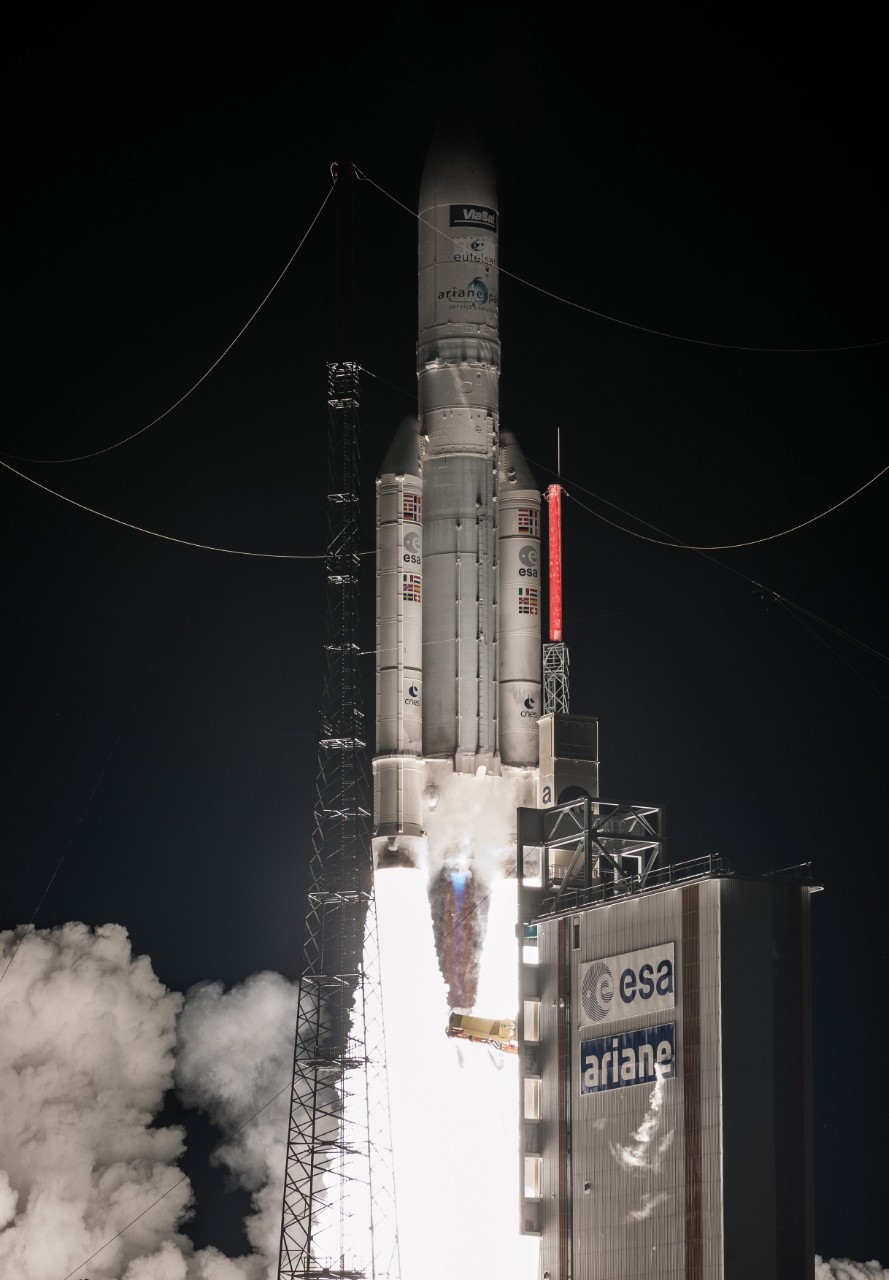Keeping passengers connected and entertained during flights has created one of the biggest growth sectors in aviation over the past decade – and its expansion shows no sign of slowing.
According to a report on in-flight entertainment and connectivity (IFEC) published in December 2018 by ResearchAndMarkets.com, the market value is projected to grow from $5.03 billion last year to $7.65 billion by 2023.
At the upcoming Aircraft Interiors Expo (AIX 2019) in Hamburg, recent mergers and acquisitions may mean some names have disappeared – but their technologies will be present within the expanded companies.
A good example comes from January this year, when digEcor surprised the sector by buying the Collins Aerospace IFE business, incorporating it with its own operation and rebranding the new entity Burrana. This deal combines the complete PAVES family and content services from Collins, with digEcor’s GLIDE, Engage, Power, passenger service systems and lighting products.
While the takeover discussions went on, the development of the digEcor products over the past year have continued apace, as Burrana chief executive David Withers notes: “There have been a number of new products launched including our slimmest GLIDE NV screen. At less than three-eighths of an inch [10mm] the screen is easily installed in any seatback or on any bulkhead and delivers all the functions and capabilities of our GLIDE solution.
“The screen is also significantly lighter and has the latest IMX8 processor with increased memory.”
Withers adds that, with the group’s approved model list supplemental type certificate, it “can offer airlines rapid implementation of in-seat power on the Airbus A320 and Boeing 737 [families]”. Light weight and ease of installation, he says, make adding USB or 110V power “an easy choice for any airline”.
A new cabin management 3.0 crew interface “significantly” improves cabin systems control, he says. With a remote control device, crew can control embedded IFE, lighting and passenger service systems from anywhere in the cabin. And a new Android offering “brings more flexibility to the user interface to help airlines rapidly innovate and achieve a common look and feel across fleets operating different vendors’ hardware”.
This year, Thales is rolling out the first phase of its InFlyt360 platform, enabling targeted advertising “in ways never before possible on IFE”, asserts Richard Perrot, vice-president for strategy and product policy. “This aims to drive a sixfold increase in advertising revenue.”
The platform builds on CORE and PRESTIGE, two IFE solutions based on the AVANT platform. “We also introduced the Select [user interface], providing an intuitive and more advanced passenger interface. Market acceptance of each of these products has been very positive. We will deploy InFlyt360 and the Select UI this year, and expect to announce our launch customer for CORE very soon,” Perrot adds.
Astronics has introduced a variety of in-flight connectivity products recently, including its new E-Series electronically steered array antenna system, developed by Astronics AeroSat in partnership with Phasor. Set to be displayed at AIX, this provides Ku-band connectivity and offers multi-beam capacity for geostationary equatorial orbit (GEO)/high-throughput satellite (HTS), medium Earth orbit (MEO), and low Earth orbit (LEO) satellite networks. It also supports the “make before break” requirement of non-GEO networks.

The Wow platform features on Jeju Air 737-800s
AirTeamImages
“We think the new E-Series will provide seamless connectivity for both new and existing networks while providing a true, solid-state, active-array antenna system,” says Astronics AeroSat president Matt Harrah. “This provides a lot of advantages for airlines, network operators, and most importantly the customers and their in-flight connectivity experience.”
For connectivity routing inside the cabin, Astronics Connectivity Systems & Certification (CSC) has its Summit Line products of in-flight connectivity hardware. AIX attendees will see new versions of the Encompass portable wireless IFE system, as well as traditional servers, content loaders, personal control units, and wireless access points. In addition, Astronics will demonstrate its new wireless charging module and high-efficiency EmPower USB-C charging system for personal electronic devices.
Another of the company’s business units, Astronics PGA, will demonstrate its “smart” wireless handset, the GemOne. From this single device, premium jet passengers have the ability to operate IFE and cabin systems, order meals and make telephone calls, among other functions.
For years, the aviation market has talked about garnering additional revenues and increasing customer satisfaction from in-flight wi-fi, according to Don Buchman, vice-president and general manager, commercial aviation at Viasat.
“Over the past year, Viasat has made this a reality by enabling airlines to explore new business models that allow them to engage with new internet and media partners,” he says. “We’ve worked with our airline partners to collaborate with major internet and media companies – from Apple Music, Netflix and others – to enhance their in-flight wi-fi offering. The reaction has been incredible, and we feel momentum is building to seeing more partners enter the mix.”
Buchman adds that Viasat’s AIX focus will be to “further personalise the passenger journey”, including with “true touchless media content loading and live TV streaming over our high-capacity satellite network”.
Bluebox Aviation chief executive Kevin Clark says his company has over the past year concentrated on value-adding features for both airlines and passengers: “That’s actually meant the rapid development of our portable wireless platform – Bluebox Wow – into a connected portable solution, incorporating an aircraft power option, a PA Pause feature, payments and connectivity.”
The company, he adds, has seen Wow selected for Jeju Air’s 737-800s, Air Astana’s new Embraer 190-E2s and All Nippon Airways’ Bombardier Q400s.

ANA went with Bluebox for its Q400s
Bombardier
Meanwhile, Lufthansa Systems head of passenger experience products and solutions Jan-Peter Ganse contends that infrastructure-related capacity constraint is becoming the single largest limiting factor for the whole industry. Hence the company has in the past year “launched very promising initiatives led by machine-learning paradigms”.
Ganse says: “The top initiatives launched last year harness the power of artificial intelligence [AI] to predict and resolve upcoming industry problems on all levels – on the frontline facing customers, as well as the back offices of the airline on the ground and in the air.
“All these initiatives are very practical and touchable manifestations of the buzz around AI, addressing the very real challenges of the aviation industry. We see a huge demand for such solutions in the market and are already in contact with several potential customers.”
At AIX, he adds, Lufthansa Systems will be presenting its BoardConnect IFEC portfolio “with a new livery” and will showcase app-less/browser-based video streaming, even for rights-protected content: “That addresses one of the market demands we see.”

Lufthansa Systems’ BoardConnect platform enables own-device entertainment
Lufthansa Systems
CREW TOOLS
SITAOnAir’s connectivity work has placed some emphasis on how the technology can be used not just to entertain passengers, but also to help the cabin crew. “The past 12 months has seen us implement key updates to CrewTab, our tablet interface for cabin crews, which digitises processes and information, empowering them to deliver their most effective, personalised service,” explains Yann Cabaret, the company’s vice-president for customer programmes and cabin services.
CrewTab’s new Crew Member Alerts feature digitises paper-based alerting for everything from extra customer care requests to changes in destination, or welfare matters. Airlines can easily create and send alerts to multiple crewmembers and flights via SITAOnAir’s web-based administration portal, he says: “CrewTab Server now automatically pushes those alerts to specified recipients, instead of crews having to use printed briefing documents. Specific information for each flight is easily accessible to relevant crew.”
Cabaret says SITAOnAir will demonstrate its latest innovations in Hamburg, including end-to-end cabin services supported with high-speed in-flight connectivity. “Delegates will also have the chance to discover SITAOnAir’s ‘open cabin’ approach to achieving airlines’ in-flight connectivity ambitions.”
Panasonic Avionics has announced two major developments in recent months. First, it collaborated with international news platform TRT World to launch in-flight broadcasting, then followed up with the news that its deal with Ericsson for that company’s Core Network as a service solution had gone live, supporting connectivity services across multiple markets served by Panasonic.
The first partnership enables Panasonic to extend TRT World’s live broadcast to many of the globe’s leading international carriers. “Panasonic is proud to offer the world’s only truly global in-flight live television services,” says Julie Lichty, head of digital solutions and services at Panasonic Avionics. “We believe that TRT World is a significant enhancement to our portfolio and will be a tremendous enhancement to our airline customers’ passenger experience.”
Having Ericsson’s Core Network as a service solution will help Panasonic and its subsidiary AeroMobile provide data, voice and messaging services to passengers. The collaboration started in 2016 and became fully operational in January 2019. Every passenger whose mobile service provider has a roaming agreement with AeroMobile can use the service.
WHERE NEXT?
There is clear momentum in new technology implementation, but given the range of capabilities being matured it is hardly surprising to find a range of views on where current trends are taking the market.
“Seatback will always have a role and this will deepen with the delivery of a rich, high-definition experience delivered in a multiscreen worlds – in many cases blending airline and own devices,” suggests Clark. However, he still foresees “growth in the use of portable systems operating from fitted power and connectivity capabilities” and notes: “Such systems are less constrained than in the traditional, fitted systems world.”
While Withers expects “increased adoption of seatback IFE in favour of other IFE solutions on narrowbody aircraft”, Perrot believes the industry will take a more balanced approach. “Wireless IFE will continue to complement the Thales solutions portfolio in serving diverse market segment needs, while embedded IFE is still the standard for medium- and long-haul flights providing opportunities to engage passengers in ways that personal devices cannot. More airlines are opting for both systems concurrently,” he says.
Where IFE is delivered via personal electronic devices, Lufthansa Systems sees two developments, according to Ganse: “On one hand, the requirement to enable passengers to access the IFE system without any hurdles, for example the precondition to download a dedicated IFE app. On the other hand, airlines are looking into consolidation of the IFE into a single airline app that also addresses other uses – check-in, flight booking and so on – with the aim to have a single point of contact to the passenger.”
Viasat’s focus is on how airlines can develop revenues and loyalty from having the highest-quality onboard connectivity service. “This leads to the major trend of ensuring airlines are investing in the most robust satellite network – with the highest capacity – to handle demand in traditionally congested airport hubs to deliver true gate-to-gate connectivity,” says Buchman.
Thales predicts exponential growth in demand for connectivity. “We also expect a significant increase in connectivity speeds to the passenger to give the same flexibility passengers are used to on the ground. Ka-band HTS will remain the dominant technology with solutions which have the ability to provide unprecedented amounts of capacity in high-traffic zones,” Perrot notes.
Also in the provision of connectivity, satcom antenna manufacturers “will continue to watch market evolution in two key areas”, says Harrah. “The first is the development progress of LEO/MEO constellations and overall suitability (or lack thereof) in aero mobility markets, plus network provider/operator plans to support hybrid constellation connectivity supported by electronically steered array antennas. Second is the resurgence of Ku-band due to the introduction of Ku-band HTS as an alternative to Ka-band networks as satellite operators demonstrate improved performance and network maturity.”
Harrah’s counterpart at Astronics CSC, Michael Kuehn, adds: “Future trends [in connectivity hardware systems] include cabin wireless access points featuring WPA3-Enterprise, which is the latest evolution in data encryption and security enhancements for wi-fi.”

Viasat-2 launch, June 2017
ESA/CNES/Arianespace
Source: Flight International




















